Joyce Kozloff
Joyce Kozloff, one of the founders of the feminist art movement of the 1970’s, and a leader in the Pattern and Decoration movement, has had a long and distinguished career, both in gallery and museum exhibitions and in commissions of public art. Since the early 1990’s she has employed maps and mapping as a format for all her ongoing concerns: history, geography, popular arts and culture. “Targets,” 2000, a walk-in globe, brought together her sense of politics and interiority, both architectural interiors and the interiority of the private self enclosed in and defined by the public sphere. “Social Studies,” recently shown at the Alliance Francaise, layers collaged images and paint onto mid-century classroom maps, a commentary on shifting social and cultural perspectives during Kozloff’s own formative school years. Since 2013 she has been returning to earlier motifs and works, using them as templates which are then submitted to digital processes with dense overlays of paint and collage, increasing scale and complexity. In contrast to the sleekness of the digital, she has also been embedding “tchotchkes”–gifts or purchases–into some of her panels. Together these procedures conflate east and west, past and present in a humorously expansive and articulate political commentary.
Question:
Your work has mixed patterns and decoration with maps, political, personal, family history, two dimensions and three dimensions, the found object, the digital, the hand crafted. Is there anything about any of these elements that you feel has not been sufficiently explored in the commentary on your work?
Answer:
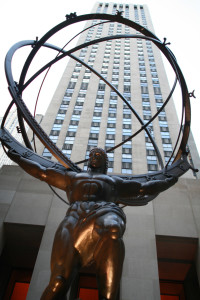 Since I began making maps and globes more than 20 years ago, I’ve been eyeing the giant bronze sculpture of Atlas holding up the world at Rockefeller Center across the street from St. Patrick’s Cathedral by Lee Lawrie and Rene Chambellan, 1937. Someday, I’d love to make a piece in dialogue with it, from a feminist perspective but not a literal role reversal. I’ve read that in its day, visitors to the site thought Atlas looked too much like Mussolini. Art changes with time, and many people today would not recognize Mussolini. Whom does he look like now? No one I know! In a recent artwork, “The Tempest,” I situated a miniature Atlas found on EBay at the center of a vast eighteenth century Chinese world map. His globe looks more like a beach ball. By placing him there, I’ve begun our conversation.
Since I began making maps and globes more than 20 years ago, I’ve been eyeing the giant bronze sculpture of Atlas holding up the world at Rockefeller Center across the street from St. Patrick’s Cathedral by Lee Lawrie and Rene Chambellan, 1937. Someday, I’d love to make a piece in dialogue with it, from a feminist perspective but not a literal role reversal. I’ve read that in its day, visitors to the site thought Atlas looked too much like Mussolini. Art changes with time, and many people today would not recognize Mussolini. Whom does he look like now? No one I know! In a recent artwork, “The Tempest,” I situated a miniature Atlas found on EBay at the center of a vast eighteenth century Chinese world map. His globe looks more like a beach ball. By placing him there, I’ve begun our conversation.
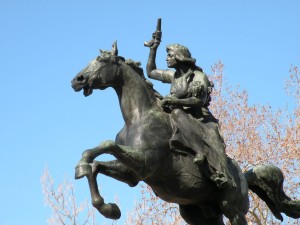 I think about the equestrian statues in every western city, monuments that are today largely invisible to us despite their ubiquitous presence. On the Janiculum Hill In Rome among the busts of the fallen Garibaldini (19th century Italian revolutionary soldiers who fought with Giuseppe Garibaldi to free Italy from French and Austrian control), there is a dramatic statue of Anita Garibaldi, the general’s wife, by Mario Rutelli, 1932. She is seated on a charging horse, suckling a child and brandishing a pistol. Anita has become an iconic figure, especially as she is so anomalous among public memorials. Created out of nationalist pride during the fascist era, it was neither ironic nor politically dissenting, but it reads today as a feminist challenge to authority. Could I recharge Atlas, titan of astronomy and navigation, so as to make him relevant in today’s global world?”
I think about the equestrian statues in every western city, monuments that are today largely invisible to us despite their ubiquitous presence. On the Janiculum Hill In Rome among the busts of the fallen Garibaldini (19th century Italian revolutionary soldiers who fought with Giuseppe Garibaldi to free Italy from French and Austrian control), there is a dramatic statue of Anita Garibaldi, the general’s wife, by Mario Rutelli, 1932. She is seated on a charging horse, suckling a child and brandishing a pistol. Anita has become an iconic figure, especially as she is so anomalous among public memorials. Created out of nationalist pride during the fascist era, it was neither ironic nor politically dissenting, but it reads today as a feminist challenge to authority. Could I recharge Atlas, titan of astronomy and navigation, so as to make him relevant in today’s global world?”
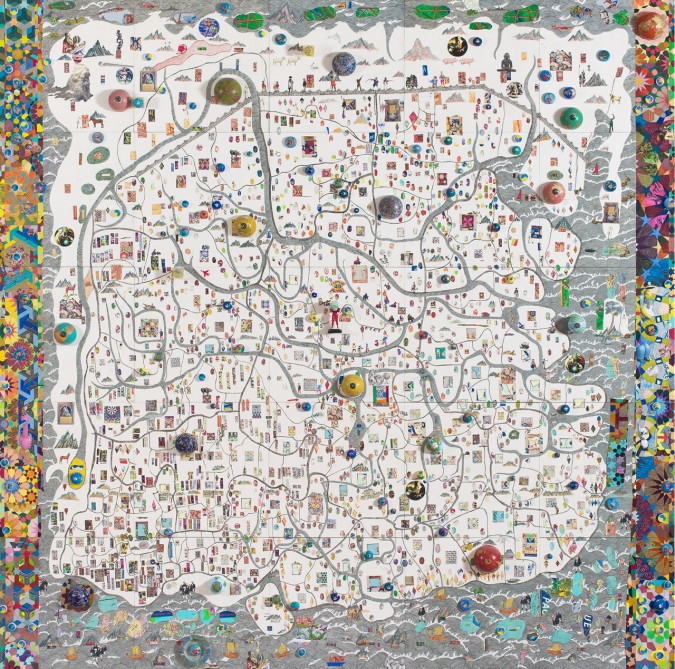
The Tempest, 2015, 129″ x 120″ x 4″, acrylic, pencil, collage and assemblage on panel, courtesy DC Moore Gallery, photo Steven Bates
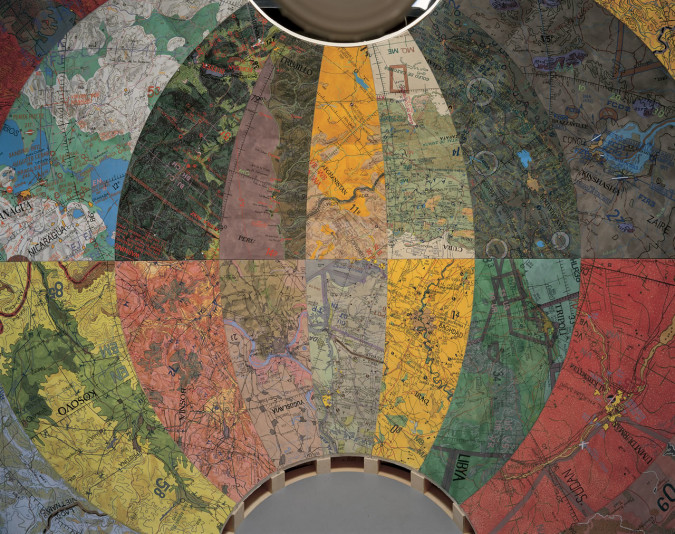
Targets, 2000, 108″ diameter, acrylic on canvas, wood, courtesy DC Moore Gallery, photo Jon & Anne Abbott
One Question/One Answer is a series of very, very brief conversations about art and life between Romanov Grave and a variety of extraordinarily interesting artists.
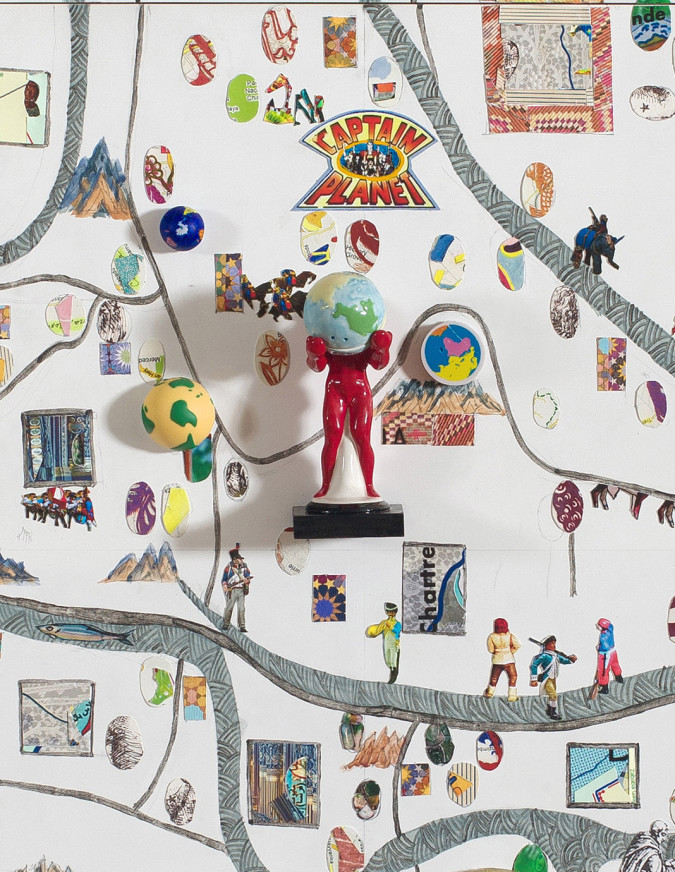






Joyce Kozloff is a FABULOUS artist and FABULOUS INTERVIEW!
love this insight & detail … we can go spinning off.
great interview- I love having that kind of access to her ideas!
I really enjoyed this short yet discerning interview. Joyce’s work is always such a pleasure.